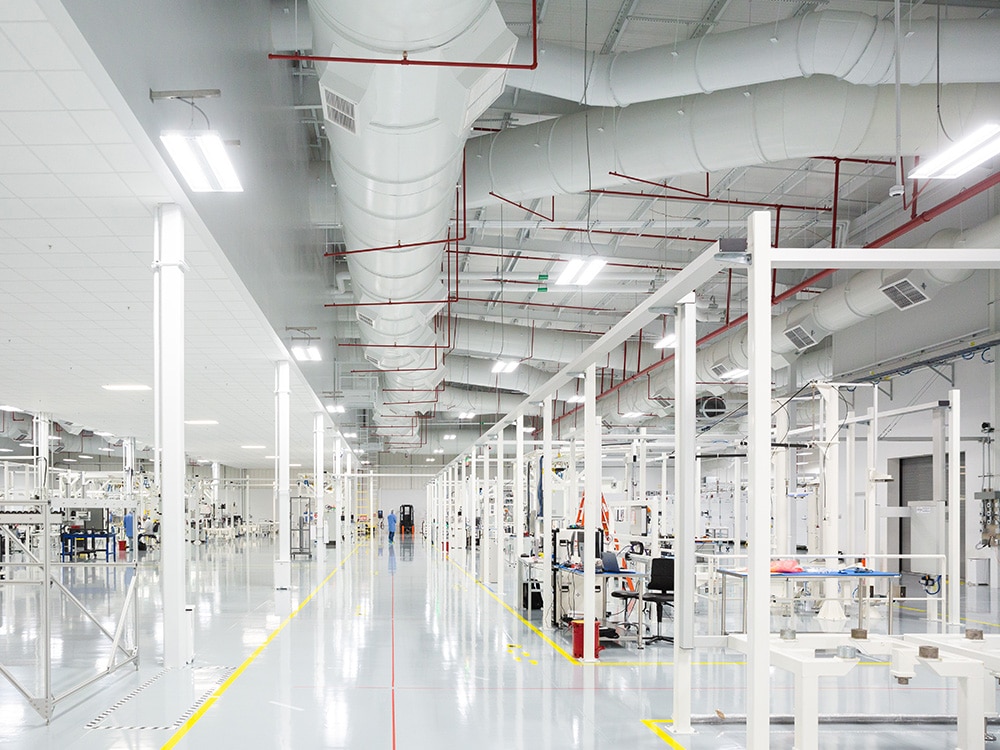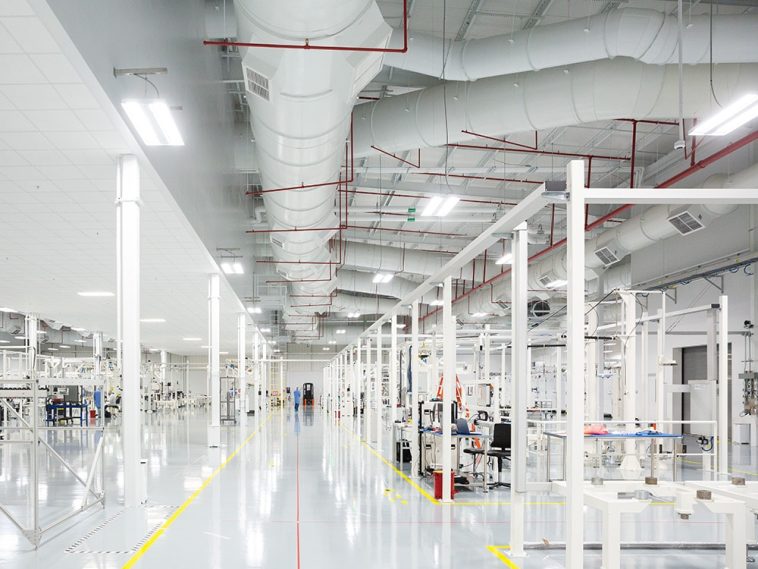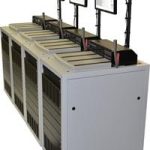
A Strong Uplift in European Satellite Production Capabilities
Over the past decades, the aerospace industry has witnessed many twists and turns that have redefined what is possible in industrial manufacturing and small business entrepreneurship. Today, we find ourselves at a new crossroads as European satellite manufacturer Aerospacelab announces a transformative Series B funding round of 94 million euros ($110 million). This bold investment promises to reshape the architecture of satellite production while setting the stage for Europe’s largest mass production facility for satellites. Many industry observers believe that this funding boost is a game changer for both the aerospace supply chain and the broader industrial landscape.
Aerospacelab’s breakthrough comes at a time when global demand for constellations of satellites is growing at an impressive pace. With expectations of full production capacity by 2027 at its state-of-the-art Megafactory in Charleroi, Belgium, the company’s plan to ramp up production to 500 satellites per year is viewed by experts as a critical step towards establishing a more resilient and competitive European satellite industry. This ambitious vision is backed by investor confidence and supported by strategic financial partnerships – elements that many consider super important as the world shifts its focus towards a more connected and technologically advanced future.
The significance of Aerospacelab’s announcement resonates beyond pure numbers, as it reflects an industry-wide trend toward vertical integration, streamlined supply chains, and faster time-to-market for cutting-edge technologies. In this opinion editorial, we take a closer look at the components of this bold strategy, digest the fine points of the funding structure, and examine how the initiative may influence not only the aerospace and industrial manufacturing sectors but also small businesses and tech investors across Europe and beyond.
Breaking Down the 94 Million Euro Funding Boost
The recent Series B round, which has injected 94 million euros into Aerospacelab’s operations, comprises a dual-tranche approach with 56 million euros ($66 million) in the first tranche and 38 million euros ($44 million) from an undisclosed European financial institution. This funding model gives us an insightful glimpse into the shifting mindset of investors, who are increasingly comfortable with the somewhat tricky parts of scaling satellite manufacturing operations.
It’s clear that this isn’t just another round of financing. According to Aerospacelab CEO Benoît Deper, the funding isn’t merely about expanding production; it is intended to accelerate the company’s efforts in preparing for the next generation of satellite constellations. As observers of the ever-twisting landscape of industrial production, many in the industry see this as a necessary injection to handle the messy, yet exciting, world of mass satellite production.
The financial details offer a rich canvas for discussion. The dual-tranche operation highlights a careful balancing act that investors must perform when managing their portfolios in an environment full of problems and unpredictable turns. By splitting the funding into two sections, Aerospacelab can manage growth more effectively, ensuring that significant capital is reserved for the most nerve-racking stages of scaling operations. This balanced approach demonstrates how smart financial planning is not merely about obtaining funds but managing them with a clear tactical purpose.
- First tranche: 56 million euros aimed at immediate scaling needs.
- Second tranche: 38 million euros providing strategic buffer and flexibility.
- The dual-tranche structure: Considered a nuanced move to protect against supply chain delays and unforeseen production challenges.
In many ways, the funding structure mirrors the delicate process of fine-tuning industrial production. Just as one must find a way to balance every detail when working through the tangled issues of any large-scale project, Aerospacelab’s financial arrangement embodies the art of managing available resources in an uncertain market.
Industrial Manufacturing Insights: The Expanding Megafactory in Belgium
The Megafactory currently under construction in Charleroi, Belgium, represents more than just bricks and mortar; it symbolizes the renewed ambition of European manufacturing. Set to commence production in 2026 and reach full-scale capabilities by 2027, this facility is designed to become a pivotal hub that could reshape satellite manufacturing standards across the continent.
From the perspective of industrial manufacturing, the Megafactory initiative stands out due to its focus on mass production at an unprecedented scale. A production capacity of 500 satellites per year is not just a number—it marks the evolution from small-batch, niche production processes into a streamlined, high-volume manufacturing operation. This move is essential, given the increasing global appetite for satellite networks that fuel everything from telecommunications to digital monitoring systems.
In planning an assembly line that balances quality with quantity, Aerospacelab must figure a path through several tricky parts, such as:
- Establishing efficient production workflows.
- Securing critical components and subsystems on time.
- Integrating advanced quality control mechanisms to address any tangled issues early in the production cycle.
- Managing workforce training and certification to ensure safety and continuity.
In each of these aspects, the underlying strategy is to harness scalability, speed, and precision. The Megafactory is being positioned not only as a production powerhouse but also as a benchmark for future factories. Industrial designers and production experts are watching closely to see how these changes will influence the market, particularly in Europe’s competitive manufacturing sector.
The factory’s digital backbone, which incorporates analytic tools and dynamic management systems, reflects an understanding that modern manufacturing is as much about data as it is about assembly lines. In this sense, Aerospacelab is setting a new standard for how industrial manufacturing can overcome the nerve-racking, confusing bits of a rapidly evolving global market.
Astute Business Strategy Behind Aerospacelab’s Scaling Up
Every significant shift in industry is driven by decisions that are both innovative and calculated. Aerospacelab’s approach to scaling up its operations represents a blend of tactical foresight and robust planning. CEO Benoît Deper’s statements have highlighted that the company is not just ramping up a factory—it is preparing to address a rapidly growing global demand with speed and accuracy.
At the heart of Aerospacelab’s strategy is a bid to vertically integrate all key subsystems. This means that rather than depending on myriad external suppliers for different parts of the satellite production process, the company is investing in-house expertise to streamline production and reduce dependency on external variables. Such a tactic minimizes the confusing bits and unexpected issues that can often stymie production as supply chains become overly complex or off-putting to manage.
This integrated model isn’t exclusive to satellite manufacturing; it reflects broader trends in industrial manufacturing worldwide. Many small businesses and tech startups see the value in controlling the fine points of their production process to ensure quality and reduce costs. As Aerospacelab drives forward these initiatives, the broader aerospace community is watching to understand the subtle parts of a successful vertical integration strategy.
Key elements of this business strategy include:
- Focus on in-house production for critical subsystems and payloads.
- Robust partnerships with established names, such as Aerospacelab’s role as a subsystem supplier for MDA Space’s Aurora satellite product line.
- A comprehensive plan that addresses both immediate scaling needs and long-term capacity building.
While challenges remain in terms of managing supply chain logistics and scaling up at the required pace, the remedial measures in place demonstrate that Aerospacelab is poised to make its mark. By taking a closer look at the interplay between innovative funding strategies and practical production challenges, one can see that the company is managing its way through the rough terrain that defines the modern industrial landscape.
Challenges and Opportunities in Satellite Mass Production
Every industrial venture comes with a set of potential obstacles and, correspondingly, an array of opportunities that may arise when those obstacles are successfully overcome. Satellite mass production is no exception. As Aerospacelab gears up to scale its production, it must figure a path through a maze of tricky parts, tangled issues, and potential supply chain delays.
There are several points that deserve close scrutiny when considering the journey ahead:
- Supply Chain Consistency: Securing the necessary components and maintaining consistent quality when production volume increases can be a nerve-racking challenge.
- Workforce Development: Training a skilled workforce to manage heavy machinery and advanced production equipment is essential. The little details of training and safety protocols cannot be underestimated.
- Quality Assurance: Managing to produce a high volume of satellites without compromising on quality requires constant oversight and state-of-the-art quality control systems.
- Market Adaptability: The satellite market can be unpredictable and, at times, full of problems. Flexible planning and agile business tactics are required to respond to ever-changing market demands.
Each of these challenges comes with opportunities for growth and innovation. For instance, advancements in automated production and real-time analytics can help smooth out the process by monitoring potential issues as they occur. By integrating sophisticated data analysis tools, manufacturers may steer through unforeseen complications before they escalate.
Moreover, the collaboration between technology providers and manufacturing experts can lead to solutions that not only benefit Aerospacelab but may eventually become industry standards. As the company works through these complicated pieces in mass production, there is also a significant possibility of establishing new benchmarks that will drive the entire aerospace industry forward.
This dual narrative of challenge and opportunity is particularly interesting for industry watchers and small businesses alike, as it highlights the practical implications of investing in high-tech manufacturing technologies while also considering the unpredictable twists that come with rapid scale-up.
The Ripple Effect Across the Aerospace and Manufacturing Industries
The ambitious expansion of Aerospacelab’s manufacturing capabilities is not an isolated event. Instead, its influence stretches across both the aerospace and broader industrial manufacturing sectors. The news of this large-scale investment serves as a signal to the industry that strategic scaling and vertical integration are more than buzzwords—they are essential strategies for conquering the nerve-racking, sometimes confusing bits of modern production.
When a company takes the bold step of investing in a Megafactory capable of producing 500 satellites annually, it sets off a chain reaction that can be felt throughout the entire market. This ripple effect can be summarized in several key areas:
- Market Innovation: With a high production rate, the technology and processes developed at the Megafactory could serve as benchmarks for future manufacturing.
- Economic Uplift: Large investments like these tend to create local job opportunities and spur related industries, benefiting small businesses along the supply chain.
- Competitive Pressure: Other manufacturers, both in Europe and globally, may be forced to innovate in order to keep pace with Aerospacelab’s new production models.
- Investor Confidence: A clear demonstration of scaling up can attract additional venture capital and strategic investment across the broader market.
This effect is not confined to aerospace alone. In automotive manufacturing—an industry that has recently experienced its own waves of transformation due to electric vehicles—and in other heavy industrial sectors, controlling production and managing supply chains have become super important measures to stay agile and competitive. By setting new exemplars in quality and efficiency, Aerospacelab’s strategy underscores the need for industries to dig into every aspect of the production line, from raw materials to finished products.
Small businesses, in particular, might use such industry moves as motivation to adopt innovative practices or seek partnerships that drive operational efficiency. In essence, the developments witnessed at the Megafactory are paving the way for more integrated, efficient, and resilient industrial ecosystems, marking an exciting future for everyone involved.
Practical Implications for Small Businesses and Tech Investors
It is important to consider how such an audacious production scaling project influences the broader business landscape, especially small enterprises and tech investors who operate in an environment full of tricky parts and nerve-racking uncertainties. The developments at Aerospacelab allow for a broader discussion on how strategic investments in technology and manufacturing not only foster growth in specialized industries but also mail up opportunities for allied business sectors.
From a practical standpoint, small businesses might observe the following implications as they attempt to get around the competitive labyrinth of modern manufacturing:
- Opportunity for Collaboration: As large manufacturing entities expand, there is an increased chance for supply chain partners, niche component manufacturers, and tech service providers to collaborate, unlocking revenue streams that benefit local economies.
- Enhanced Innovation Ecosystems: Innovations that arise from integrated manufacturing setups can spill over into adjacent industries, leading to simplified product development cycles and reduced time-to-market for innovative ideas.
- Learning and Adaptation: Observing the development, launch, and scaling up of high-technology production facilities provides meaningful lessons on managing the subtle parts and little twists of complex operations.
- Increased Market Confidence: Successful large-scale projects can foster a sense of robust confidence among investors, encouraging further investment in related fields and nurturing a friendly climate for emerging startups.
Tech investors are particularly drawn to ventures that show a well-thought-out growth trajectory along with a clear roadmap for quality assurance. With Aerospacelab’s venture, the integration of advanced digital analytics in production and the focus on vertical integration are not just attractive elements—they represent practical solutions to the challenges of keeping production efficient and quality consistently high.
These factors converge to create an environment where small businesses and tech investors alike can explore new opportunities, forge meaningful alliances, and ultimately play their part in propelling an industry that is already setting the stage for a fundamentally redefined global communication and monitoring network.
A Bright Future: The Next Generation of Satellite Constellations
There is no denying that satellite constellations are on the verge of transforming how we understand connectivity, communications, and data transmission in an increasingly digital world. The forthcoming increase in production capacity through Aerospacelab’s Megafactory is set to support this next generation of satellite fleets. These fleets promise to provide ubiquitous coverage, improved data processing, and reliable connectivity to both urban and remote regions of the world.
The innovative leap toward a production capacity of 500 satellites per year carries with it several finely tuned implications. Among these are:
- Expanded Global Connectivity: With a higher number of satellites, the ambition to bridge connectivity gaps in underserved regions becomes a more realistic proposition.
- Enhanced Data Capabilities: A denser satellite network means faster data transmission and enhanced reliability, fueling growth in sectors such as autonomous vehicles, IoT networks, and smart cities.
- Technological Evolution: The new generation of satellites built in high-volume facilities will be streamlined to integrate the latest in payload and subsystem technologies, ensuring that they are equipped to handle the evolving demands of modern communication.
Furthermore, as manufacturers like Aerospacelab take charge of scaling up production, we can expect improvements in cost efficiency and reliability that will have a positive impact on all segments of the satellite market. Even though the journey is filled with complicated pieces and occasional nerve-racking hurdles, the overall trajectory is clearly one of forward momentum and promising technological breakthroughs.
This strategic scaling not only benefits governments and large corporations who rely on robust satellite data but also creates new business avenues for companies of all sizes. As these satellites become more affordable and efficient to produce, the market sees opportunities for expanded services, innovative applications, and an overall reshaping of the global digital infrastructure.
Conclusion: Rewriting the Horizon of Satellite Manufacturing
In summary, Aerospacelab’s recent funding announcement and the launch of its Megafactory in Belgium represent more than just progress for one company—they signify a broader shift in the aerospace and industrial manufacturing sectors. This strategic investment, structured through a thoughtful and balanced dual-tranche funding model, positions the company to meet rising global demand with precision and speed. It also echoes a larger sentiment among investors and small businesses that now, more than ever, controlling the production line’s fine points and managing every little twist in the process is absolutely essential.
The decision to ramp up production to 500 satellites per year is not without its challenges, and the path ahead remains full of tricky parts and tangled issues. However, with robust planning, innovative vertical integration, and a forward-looking management approach, Aerospacelab appears well-equipped to get into this next chapter of satellite mass production. The initiative paves the way for a new era in aerospace, where integrated production facilities, advanced analytics, and streamlined workflows set the benchmark for the entire industry.
For small businesses, tech investors, and industrial manufacturers alike, this evolution represents an opportunity to forge ahead into a future replete with technological innovation and economic promise. As we make our way through the ever-changing landscape of global manufacturing, one thing is clear: the future is bright, and the next generation of satellite constellations is closer than we might have imagined.
This bold step by Aerospacelab acts as a clarion call for all industry stakeholders to take a closer look at the profound possibilities that lie within integrated, high-volume production environments. By addressing every confusing bit and nerve-racking twist along the journey, the company is not only rewriting its own future but also setting a new course for the entire realm of satellite manufacturing.
In our fast-evolving world, those willing to steer through the fine points of innovation will ultimately find success in an industry that prizes precision, resilience, and the ability to adapt. Aerospacelab’s journey, driven by both strategic funding and cutting-edge manufacturing capabilities, is a compelling narrative of how focused investments and smart business strategies can redefine an entire market segment. As industries across the board watch and learn, the message is clear: the future belongs to those who can manage their way through the chaotic yet promising landscape of modern industrial production.
Originally Post From https://www.satellitetoday.com/manufacturing/2025/08/26/aerospacelab-closes-110m-series-b-round-to-ramp-up-satellite-manufacturing/
Read more about this topic at
Muon Space raises $90 million to scale satellite production …
Scaling the Production of Low Earth Orbit Satellites


